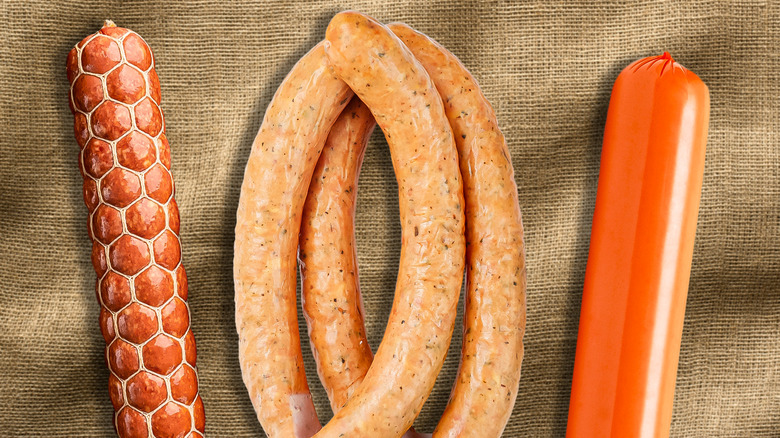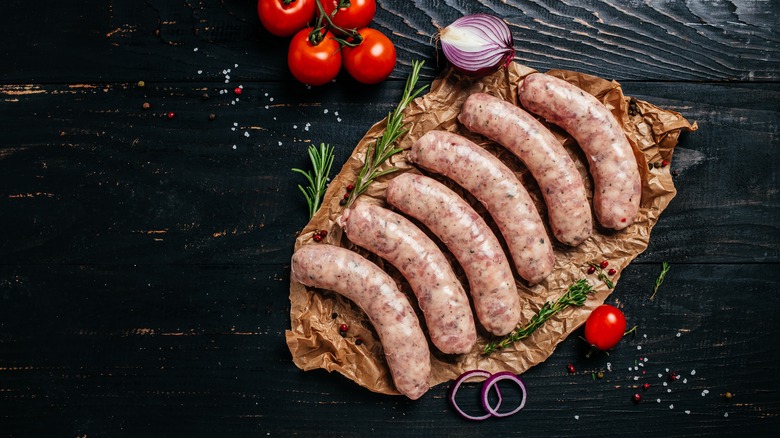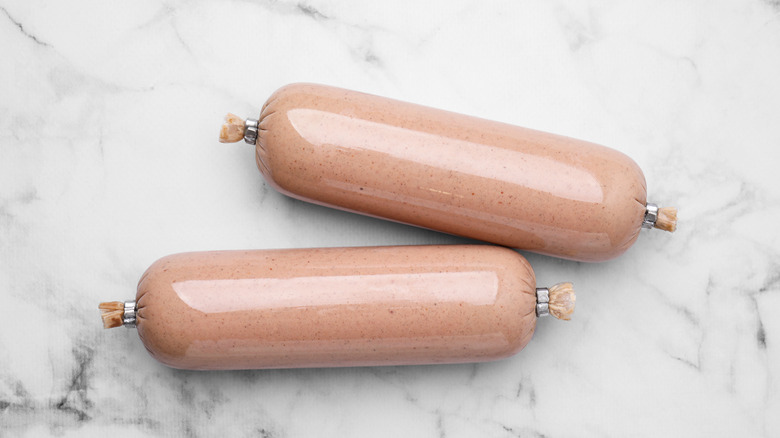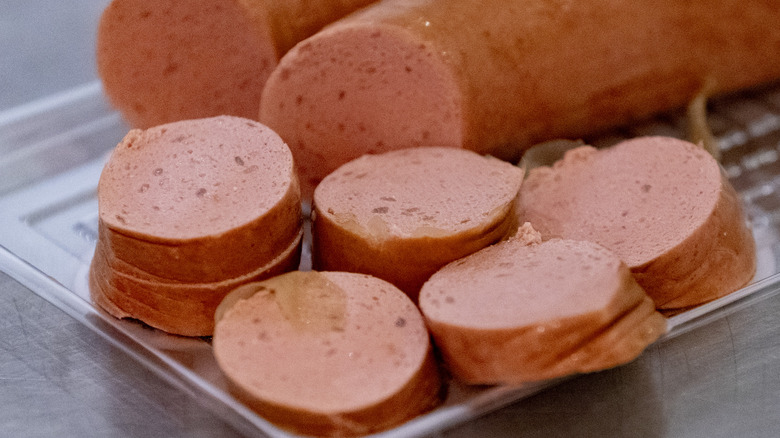What You Should Know About The 3 Common Types Of Sausage Casings
Sausage casings are used to hold the sausage mixture in place and give it its signature shape. Some people opt to remove sausage casings, while others leave them on; whatever you do with your sausage casings is up to you. Not all sausage casings are made the same though, and different casings may give you different results based on what you're trying to accomplish. There are three main types of sausage casings you'll typically find: natural, synthetic, and plant-based.
Each of these casings has its time and place to be used, and for the most part, accomplish the same things. However they also each have their distinct qualities, and knowing these qualities allows you to better cook with whatever type of sausage you'd like to use. Historically the most popular casings for sausages have been natural, these are typically from the intestines of animals. But more and more synthetic and plant-based casings are being created, which mimic natural casings but use other man-made or natural substitutions in place of the intestine.
What are natural casings
As mentioned, throughout history natural casings have made the most appearances when talking about sausages. As mentioned, natural casings typically come from the small intestine of the animal and most commonly use the submucosa layer. This layer of the small intestine is a popular choice because of the higher amounts of collagen found in it. Collagen gives the sausage a nice flavor and prevents the meat from drying out too much. If you've ever had a bratwurst or sausage that had a nice "snap" when you bit a piece off, chances are it came from a natural casing.
Natural casings are completely edible, the only reason you'd have to remove a natural casing is if you wish to break up the sausage meat inside. Even though new casing technology has been invented for sausages over the years, natural casings are still the top choice due to the extra flavor and hardiness of smoking and cooking. One downside of natural casings is that sausage makers have to work with the natural form, this can lead to slight irregularities in how each sausage is made and won't guarantee a uniform size and appearance. Natural casings can come from different animals, including sheep, pigs, and cows. You'll find these casings on sausage products such as bratwurst, snacksticks, smoked sausages, and some fresh sausages as well.
What are synthetic casings?
Synthetic casings refer to man-made sausage casings. Unique benefits of synthetic casings are the ability to create uniform shapes for your sausages, and these types of casings tend to last longer. There are a variety of materials that can be used to create synthetic casings, but not all are edible. Synthetic casing material includes cellulose, plastic, and collagen. The difference between collagen in natural casings and synthetic casings is that synthetic collagen is created specifically for sausage, natural casings just happen to have collagen in the intestinal part being used. Synthetic collagen casings can be made from animal hide, bones, and tendons. This means a wider array of animals can be used, including poultry and fish. Synthetic collagen casings are one of the most popular casings today because they are edible, add a nice taste, and create uniformity.
Cellulose is a fibrous material made from things such as wood pulp and cotton and is not edible. Cellulose and plastic casings will need to be removed before eating. They are typically used for skinless sausages, which come in all shapes, flavors, and sizes. These skinless sausages include products such as pepperoni, liverwurst, and bologna. If you need to remove a sausage casing, the packaging on the product will typically alert you. If you are using synthetic casings to create your own sausages, make sure you check if you need to soak your casings before use.
What are plant-based casings?
Plant-based casings are typically reserved for vegan and vegetarian sausage. These casings are edible and made to offer a plant-based meat experience to eating traditional sausage. Some downfalls of these casings are they may not be as durable as other options, and won't have as much snap as other casings. Most plant-based sausage casings will be made with vegetable glycerin, starches, and polysaccharides. Some plant-based casings are even made with seaweed.
These creative casings are ideal not only for vegans and vegetarians but also for people who don't eat certain animal products or animal parts for religious and personal reasons. One thing to keep in mind with plant-based casings is that oftentimes they are not naturally gluten-free, so if you have gluten sensitivities be sure to double check before using. Like synthetic casings, plant-based casings offer uniformity to sausage making. And most plant-based cases can be used in the same way as other casings, from grilling to smoking to the microwave. Just be cautious while cooking as they are slightly more delicate.



